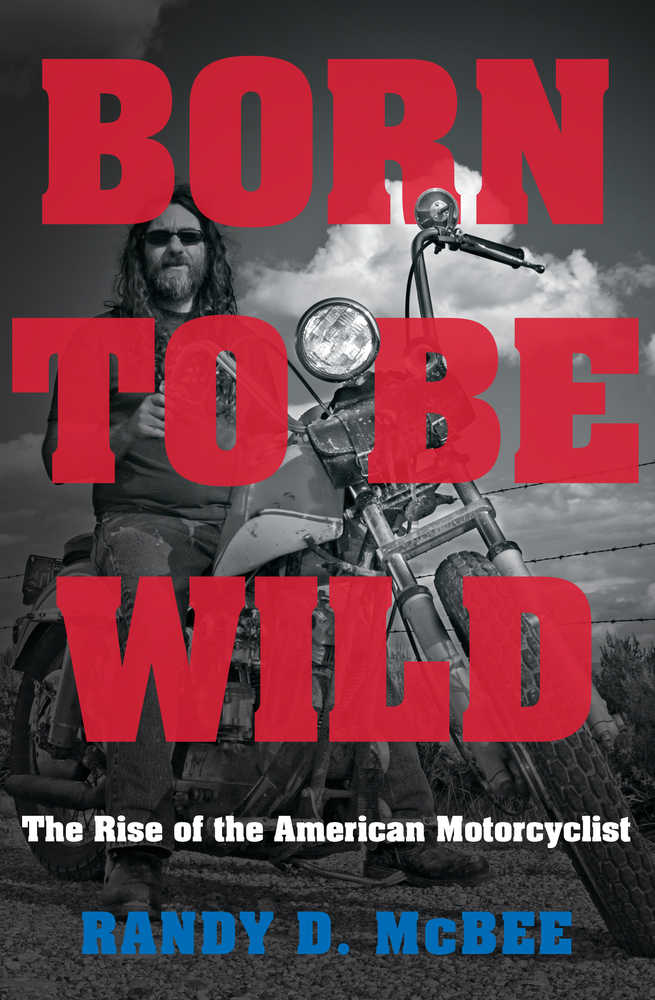You’ll never be accused of missing adventure because you’re too tired.
Two, in fact, is just the right amount of tires; because the weather is perfect and it’s summertime, you can’t imagine riding on more. But how did a simple modification on a bicycle become something that’s represented danger to many people? Read the new book “Born to Be Wild: The Rise of the American Motorcyclist” by Randy D. McBee, and you’ll find out.
In the early years of the last century, when “gypsy tours” were organized for the benefit of motorcycle enthusiasts who wanted a scenic ride to a place where they could compete, riding was a fun pastime. That changed in 1947 in Hollister, California, when roughly 4,000 motorcyclists rallied, fought, disobeyed traffic laws, and got drunk and disorderly. Quick-thinking police had the situation under control in no time, but the die was cast: motorcycling became near-synonymous with debauchery.
At that time, there were over 200,000 motorcycles registered for use on highways in the U.S.; by 1950, the number had more than doubled. In many American minds then, leather jackets, rolled-up jeans, white t-shirt, and a slouch (a la Marlin Brando and James Dean) personified hoodlumism, even though both the uniform and the bikes themselves had been part of “working-class communities for decades.” Still, anyone sporting that look aboard a motorcycle was considered to be a “bum.”
By the early 1960s, motorcycles were more diverse, as were their riders. Japanese bikes were common; women, African Americans, and Hispanics took up riding; and it wasn’t uncommon to see suited businessmen aboard their bikes. Clubs sprung up in suburbs and cities, but although those riders were noted, they were not feared – not, at least, as much as the newly-named “bikers” for whom violence and crime were often attributed. Indeed, says McBee, some clubs became gangs that reportedly committed “’unimaginable’” violence and terroristic crime.
By the ‘80s, being a biker was more mainstream and, while gangs enjoyed notoriety, bikers learned to use their clout to help form laws and offer support. Women took up bikes in higher numbers, as did Black and Hispanic riders who, says McBee, now may be poised to change the future of motorcycling yet again.
Though I liked it, and though I learned quite a bit, I doubt that anyone would consider “Born to Be Wild” as light reading.
No, there’s a lot packed into these pages: author Randy D. McBee offers readers a serious, detailed history of the culture of “biker,” starting almost in the middle of the history of the motorcycle. That’s a nice approach: bookshelves are full of the history of the machine but not much on bikers, other than of the outlaw sort. McBee encompasses many aspects of The Life, including politically-charged issues that might have surprised our forebears, and how riding has become acceptable once again.
Bikers, obviously, will rumble for this book, but they’re not its only audience. Historians and pop-culture fans could also find “Born to Be Wild” is the best thing off two tires.
The Bookworm is Terri Schlichenmeyer. Email her at bookwormsez@gmail.com.

